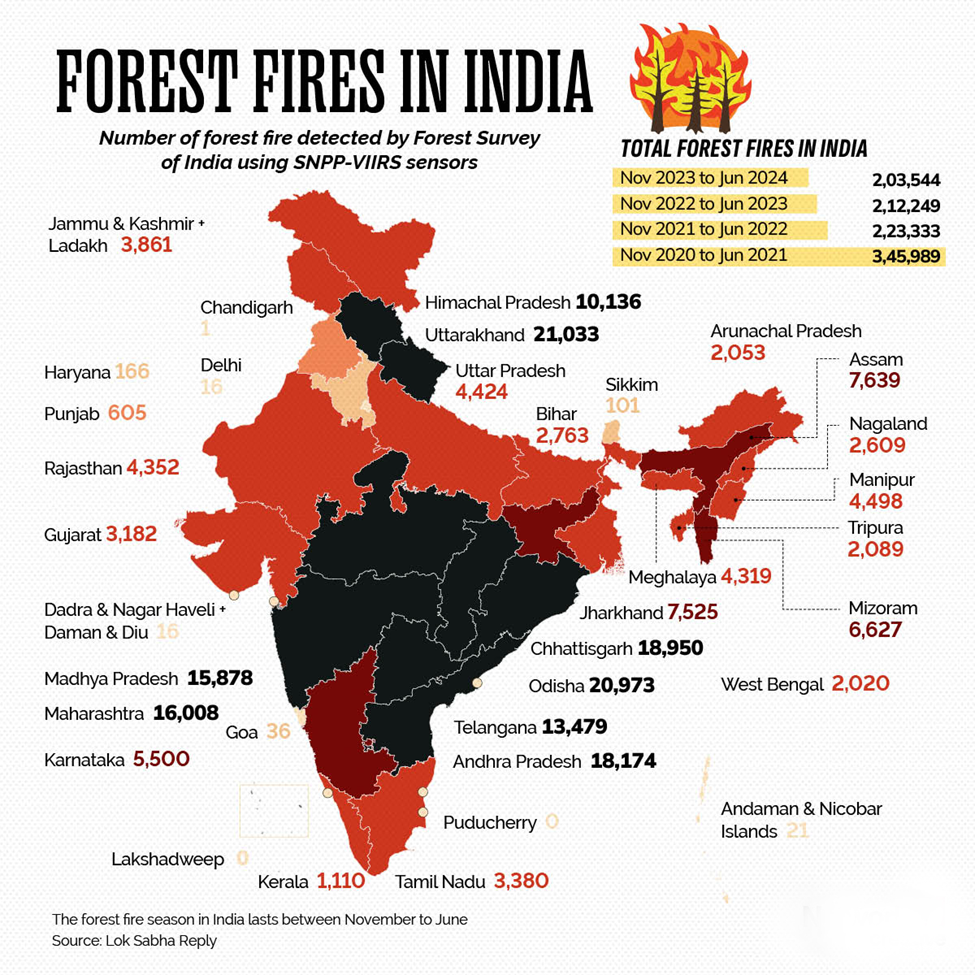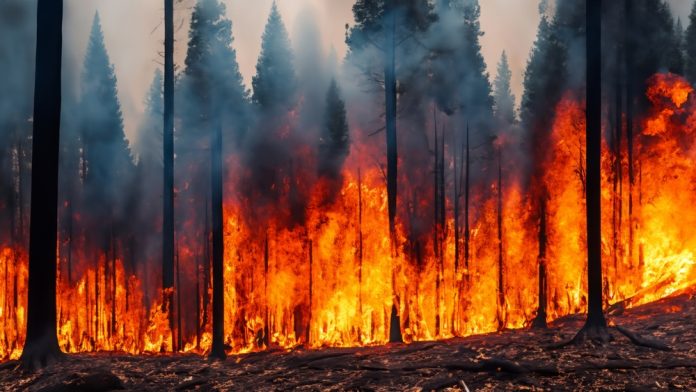Introduction:
Forests play a crucial role in maintaining environmental balance. They absorb carbon, a function known as being "carbon sinks," and thus help regulate atmospheric CO2 levels. However, in recent years, incidents of wildfires in forests have been increasing rapidly. This is not only destroying forests but also weakening their role as carbon sinks. As a result, CO2 emissions worldwide are rising, becoming a more severe problem contributing to climate change.
- A recent study by the Center for Wildfire Research has revealed shocking data, indicating that global CO2 emissions have increased by 60% since 2001. The main cause of this rising emission is wildfires. According to the study, carbon emissions from the boreal forests, especially in North America and Eurasia, have increased threefold. Scientists believe that climate change plays a major role in this growing emission, as rising temperatures and increasing drought events are fueling forest fire incidents.
What is a Wildfire?
Wildfires, also known as bushfires or forest fires, are uncontrolled fires that burn vegetation or forests. These fires are dependent on environmental factors such as dry weather, high temperatures, and wind flow. Wildfires require three major elements to burn—fuel (plants and trees), oxygen, and a heat source (such as lightning or human activities). There are four main types of wildfires:
1. Surface Fire: This type of fire burns dry grass, leaves, and twigs on the forest floor. It is often low-intensity but can spread rapidly.
2. Underground Fire/ Zombie Fire: This fire burns underground, slowly consuming roots or organic matter. It can be difficult to control and can burn for long periods.
3. Canopy Fire: This fire occurs at the top (canopy) of trees and is extremely intense. It spreads very quickly and is dangerous.
4. Controlled Fire: This fire is deliberately set by forest departments or relevant agencies with the aim of maintaining ecosystem health.
Key Findings of the Study:
The study conducted by the Center for Wildfire Research highlights several key points, pointing to this growing threat:
1. Global Fire Patterns: Researchers have used machine learning to classify 12 different "pyromes." These pyromes are groups of regions with similar fire patterns, influenced by similar environmental, human, and climate factors. The aim of this classification is to improve wildfire management and risk assessment.
2. Significant Increase in Carbon Emissions: Apart from tropical and subtropical regions, emissions from wildfires are increasing in other climate zones as well. Such forest fires release large amounts of carbon, raising atmospheric CO2 levels.
3. Rise in Carbon Combustion Rates: According to the study, the global carbon combustion rate (i.e., how much carbon is emitted per unit area) has increased by 47%. This has made forests and grasslands major contributors to global carbon emissions.
4. Climate Change and Wildfires: Human-induced climate change, the increasing frequency of droughts, and rising lightning events are causing more frequent wildfires. This threatens the forests' ability to function as carbon sinks.
5. Instability of Forest Carbon Stocks: Particularly in temperate and coniferous forests, the increasing severity of fires is destabilizing carbon stocks, causing these forests to emit carbon rather than storing it.

Challenges Arising from Wildfires:
Wildfires not only damage forests but also have several other negative impacts:
1. Environmental Damage: Wildfires harm biodiversity. They release CO2 and other harmful gases, affecting air quality.
2. Soil Degradation: Fires reduce soil fertility, hindering plant growth and affecting ecosystems.
3. Loss of Resources: Forests provide wood and other resources, which are essential for local communities' livelihoods, but they are destroyed in fires.
4. Health and Economic Damage: Smoke and pollution from fires lead to respiratory problems in people. Additionally, the cost of firefighting and property damage causes significant economic loss.
5. Management Challenges: With the increasing frequency and intensity of wildfires, controlling them and mitigating their effects has become more difficult.
Situation of Wildfires in India:
In India, the wildfire season mainly lasts from November to June, with April and May seeing the most incidents. According to the Forest Survey of India (FSI), 35.47% of India's forest area is at risk of wildfires. States such as Northeast India, Odisha, Maharashtra, Jharkhand, Chhattisgarh, and Uttarakhand are the most affected.
Recent Incidents (2024)
In early 2024, 1,309 wildfire incidents were recorded in Uttarakhand. Additionally, ISRO data shows that forest fire incidents have increased in Maharashtra, Gujarat, and Odisha as well.
Government Initiatives to Tackle Wildfires:
1. National Action Plan (NAPFF): The Government of India launched the "National Action Plan on Forest Fire" in 2018. Its aim is to reduce wildfires by involving forest communities and ensuring their participation in prevention and control efforts.
2. Forest Fire Prevention and Management Plan (FPM): Under this plan, states are provided with technical and financial support to prevent and manage wildfires. This plan was launched in 2017.
3. FAO Fire Management Guidelines: The United Nations' Food and Agriculture Organization (FAO) has issued guidelines for wildfire management, emphasizing the role of traditional knowledge and local communities.
The Way Forward:
Considering the increasing incidents of wildfires, some critical steps are required for effective management:
1. Effective Management: Monitoring forest resources in tropical areas and prioritizing risk reduction can lower wildfire risks.
2. Addressing Climate Change: Policy measures are needed to curb the rising incidents of wildfires caused by human-induced climate change.
3. International Cooperation: Countries should share experiences related to wildfires at a global level.
4. Clear Reporting Needed: The United Nations should ensure better reporting of emissions from wildfires and include fire risk in carbon credit schemes.
5. Participation of Local Communities: Local communities play a crucial role in forest protection. Raising awareness and training them can help in tackling this problem.
Conclusion:
Wildfires have become a global challenge, impacting not only our environment but also our social and economic systems. Controlling them requires vigilance, awareness, and active policy intervention.
|
Probable questions for UPSC Mains exam: Review the challenges posed by wildfires in India and the steps taken by the government to address them. |







